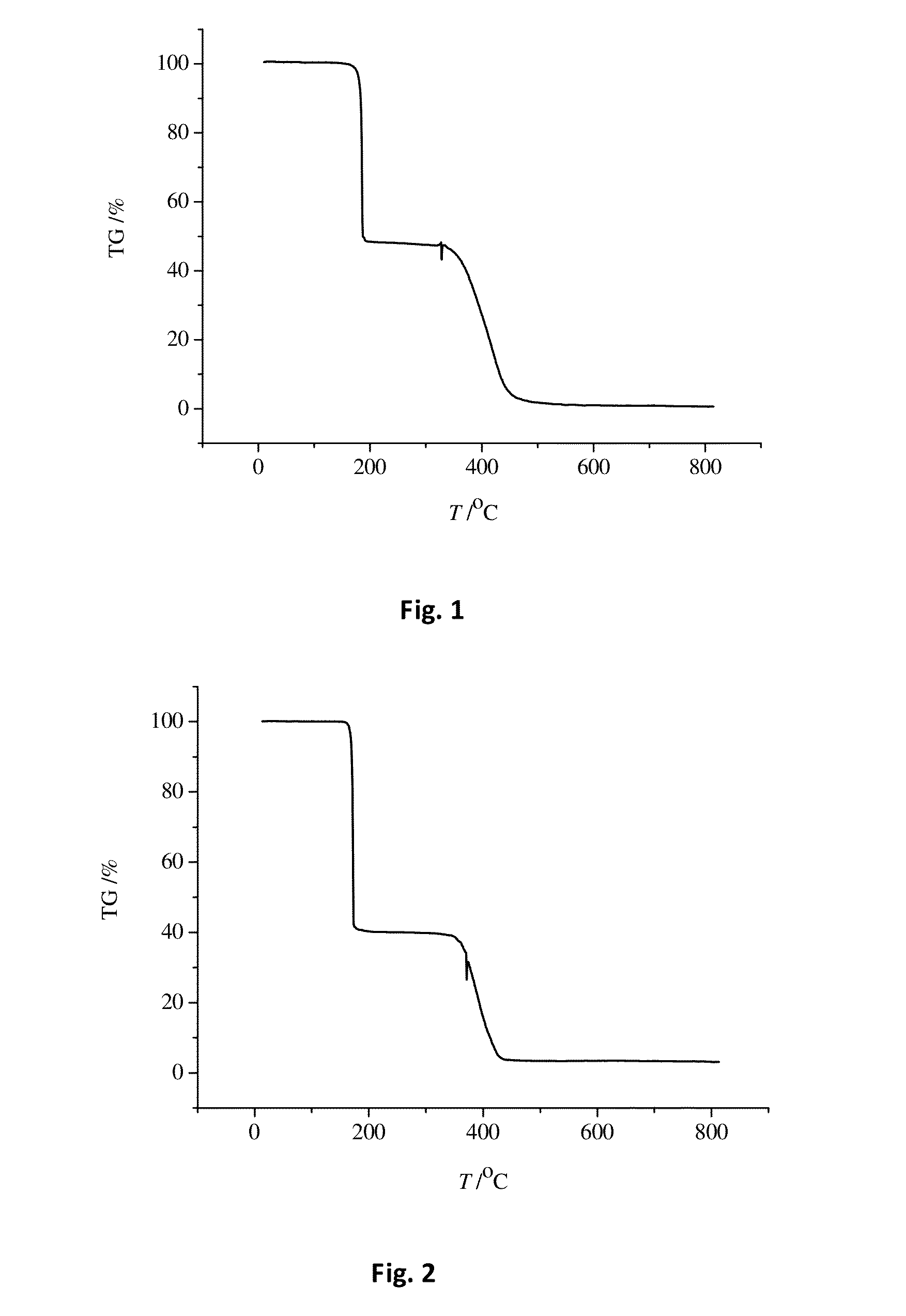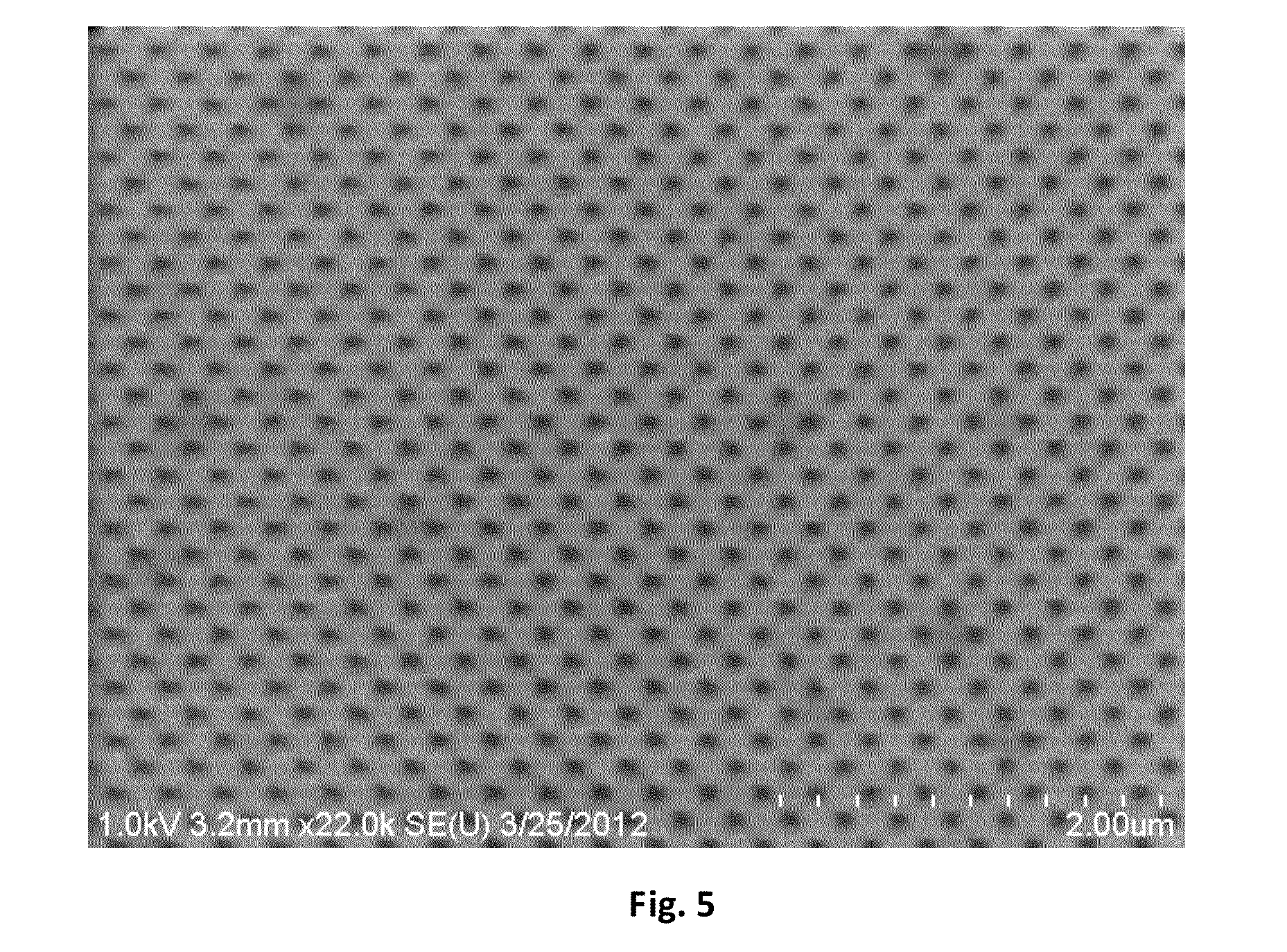Molecular glass photoresists containing bisphenol a framework and method for preparing the same and use thereof
a molecular glass and framework technology, applied in the field of molecular glass photoresists containing bisphenol a framework, can solve the problems of difficult to achieve 193 nm lithography and inability of existing polymer systems to achieve the requirements of euv lithography
- Summary
- Abstract
- Description
- Claims
- Application Information
AI Technical Summary
Benefits of technology
Problems solved by technology
Method used
Image
Examples
specific embodiments
[0039]The following specific examples are provided to further illustrate the present invention. But the present invention is not limited to the range disclosed in these examples. Any modification based on the present invention by the skilled technicians in the field achieves the similar results, which should be included in the present invention as well.
example 1
[0040]Preparation of dimethyl tetrabromobisphenol A (I-1A)
[0041]5.44 g Tetrabromobisphenol A (10 mmol) and 2.76 g potassium carbonate (20 mmol) were added to a 150 mL three-neck flask, followed by acetone solvent (50 mL) and 4.26 g methyl iodide (30 mmol). Under argon, the mixture was refluxed at 50-60° C. for 10-15 h. After completion of the reaction, the solvent acetone was removed by rotary evaporation. The residue was washed with water (50 mL) and extracted with dichloromethane (3×50 mL). The organic layers were combined, dried over anhydrous magnesium sulfate, filtered and then rotary evaporated to give a crude product. The crude product was purified by column chromatography on a silica gel (eluted with ethyl acetate / petroleum ether) to give a white solid powder (5.56 g, yield: 96.2%). EI-MS (C17H16Br4), m / z: 572. 1H-NMR (400 MHz, CDCl3) δ 7.30 (s, 4H), 3.89 (s, 6H), 1.60 (s, 6H).
example 2
[0042]Preparation of 2,2-di(4-methoxy-3,5-di(p-methoxyphenyl)phenyl)propane (I-1B)
[0043]Dimethyl tetrabromobisphenol A (5.78 g, 10 mmol), 4-methoxybenzene boronic acid (9.12 g, 60 mmol) and tetrakis(triphenylphosphine)palladium (0.58 g) were added to a 250 mL three-neck flask, followed by the addition of 2M potassium carbonate solution (75 mL) and dioxane solvent (75 mL). Under argon, the mixture was reacted at 90-100° C. for 48 h. After completion of the reaction, the mixture was layered. The organic layer was rotary evaporated to remove dioxane solvent, washed with distilled water (100 mL), and extracted with dichloromethane (3×100 mL); the aqueous layer was extracted with dichloromethane (3×50 mL). All of the organic layers were combined, dried over anhydrous magnesium sulfate, filtered and rotary evaporated to give a crude product. The crude product was purified by column chromatography on a silica gel eluting with dichloromethane to give a white solid powder (4.68 g, yield: 68....
PUM
| Property | Measurement | Unit |
|---|---|---|
| roughness | aaaaa | aaaaa |
| roughness | aaaaa | aaaaa |
| roughness | aaaaa | aaaaa |
Abstract
Description
Claims
Application Information
 Login to View More
Login to View More - R&D
- Intellectual Property
- Life Sciences
- Materials
- Tech Scout
- Unparalleled Data Quality
- Higher Quality Content
- 60% Fewer Hallucinations
Browse by: Latest US Patents, China's latest patents, Technical Efficacy Thesaurus, Application Domain, Technology Topic, Popular Technical Reports.
© 2025 PatSnap. All rights reserved.Legal|Privacy policy|Modern Slavery Act Transparency Statement|Sitemap|About US| Contact US: help@patsnap.com



